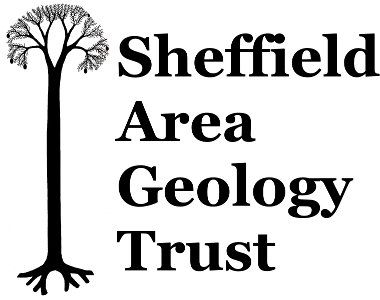Recording, conserving and promoting the landscape and rocks of the Sheffield region
Rabbit Ings, Royston - SE375118
One kilometre east of Royston on the B6428 is the large car park at Rabbit Ings, the restored pit heap for Monckton Main colliery, now a nature park and geological collecting site with lots of paths. The original spoil was landscaped and draped with topsoil to create the nature park which opened in 2011, with grassland, water and tree habitats. Deer and foxes are frequent visitors, as well as families, bird watchers and fossil hunters. It is now open access and has several paths meandering across the area. Even better, a small area has been left open for studying, fossils, and occasionally the warden at Rabbit Ings, digs it over to bring new material to the surface.
Apart from the Lepidodendron
(Scale Tree) and Calamites
(Horsetail) stems, there are seed fern leaves, like Neuropteris. In the 1960s the tip caught fire, and the heat reddened much of the fossil bearing rock, making it look a bit like terracotta.
Surprisingly no one has yet found bivalves (shell fish) which are extremely common in some beds, known as "Mussel Bands". However, one very rare find was made by Mick Birkinshaw when he picked up, not one, but two, shark egg cases. Only one other specimen has been discovered in South Yorkshire, and that was in Doncaster - on another spoil heap.
You can keep what you find, but please let the warden photograph any of the rare stuff you come up with. Tell him you read about it on the SAGT website. Current management led by Groundwork's Michael Hulley.
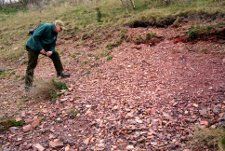
Mick Birkinshaw at the study site
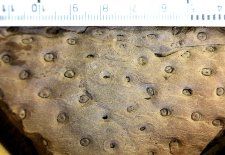
Stigmaria (root) - scale in cm
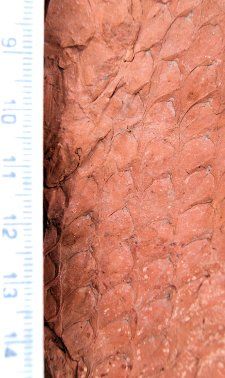
Lepidodendron
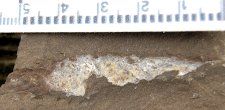
Paleoxalis (Shark egg case)
Scale in cm
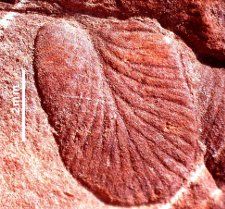
Neuropteris leaf
N.B. The inclusion of a site does not imply that there is any right of access. Some site features may be viewed from public roads and paths, but many sites are in private ownership and permissions from the landowner and/or land manager may be needed to visit more closely. Health and Safety risk assessments should be made prior to visiting all sites, to include such hazards as traffic, trip hazards or rock falls. SAGT takes no responsibility for any injury sustained, nor for any infringement of ownership rights, as a result of a site being described on this website.
